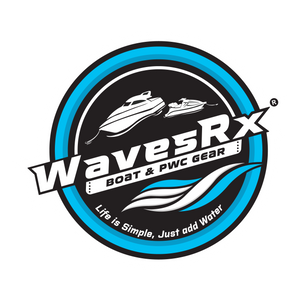Jet Ski Docking Tips: Protect Your PWC from Damage
Docking your personal watercraft, like a jet ski, might seem simple, but doing it properly is essential for protecting your investment. Whether you're pulling up to a dock after a fun day out on the water or you're getting ready to secure your craft for storage, knowing the right steps and using the proper gear can make all the difference. At WavesRx, we understand how important your jet ski or PWC is to you, and we're here to help ensure it stays in pristine condition.
Many watercraft owners underestimate the importance of proper docking, but it's actually crucial for avoiding unnecessary damage. In the following sections, we'll guide you through everything you need to know about essential docking gear, secure docking steps, common mistakes to avoid, and how to maintain your docking equipment. Our goal is to equip you with knowledge and tools so you can dock with confidence and protect your personal water from any potential harm. Let's dive into making sure your docking process is as smooth as your rides on the water.
Essential Docking Gear for Personal Watercraft
To ensure your jet ski or personal watercraft (PWC) is docked safely and securely, it’s crucial to invest in the right docking gear. Good quality docking gear not only facilitates easy docking but also plays a pivotal role in protecting your PWC from potential damage. We recommend a few key pieces of equipment every personal watercraft owner should have.
First, durable marine rope is essential. It must be strong enough to hold your jet ski against tides and currents without fraying or breaking. Fenders are another must-have. They act as a cushion between your jet ski and the dock, absorbing impact and preventing scrapes and dents on the hull. Additionally, consider using a bungee docking line specifically designed for PWCs, as they often feature built-in stretch to accommodate water movement without straining your jet ski. Lastly, a good quality anchor, suitable for the type of seabed you frequently encounter, will keep your jet ski stationary when you’re not near a dock.
Steps to Securely Dock Your Jet Ski or PWC
Docking your personal watercraft properly is as important as having the right gear. Here’s a straightforward approach we follow to ensure our jet skis are docked securely and safely. First, approach the dock slowly at a slight angle. This makes it easier to maneuver and adjust as you get closer.
Once you are near enough, use your ropes to tie the front and rear of the jet ski to the dock. Make sure you use cleats or a post on the dock to secure the lines. It’s important to adjust the ropes so that they’re tight enough to hold the PWC close to the dock but with enough slack to allow for some movement caused by water or wind. After securing the jet ski, deploy or reposition the fenders between the craft and the dock. Position them at key points where your jet ski comes closest to the dock to prevent any rubbing that could damage the hull. Before leaving your jet ski unattended, double-check all knots and ensure the fender placement effectively protects the entire side of your PWC that faces the dock.
Common Docking Mistakes and How to Avoid Them
Docking a personal watercraft seems straightforward, but a few common errors can lead to trouble if we’re not careful. One of the most frequent mistakes is approaching the dock too quickly. Speed can make it hard to control the jet ski and increases the risk of impacting the dock, which can damage both your vessel and the docking area. Always approach slowly and give yourself plenty of time to make necessary adjustments.
Another mistake is inadequate use of fenders. Sometimes, we might think one or two fenders are enough, but it’s crucial to have sufficient cushioning along the contact points between the jet ski and the dock. Incorrectly placed or insufficient fenders can lead to scrapes or more significant damage during rougher conditions. Always ensure fenders are strategically placed where the jet ski commonly impacts the dock. Lastly, neglecting to check weather conditions can also lead to docking challenges. High winds and strong currents can affect how your PWC sits and moves in the water, requiring extra precautions and adjustments to docking techniques.
Maintaining Your Docking Equipment: Best Practices
Keeping your docking equipment in good shape is essential for both the safety and longevity of your personal watercraft. Regularly inspect your ropes for signs of wear such as fraying or stiffness. Replace them immediately if they show significant wear because weak ropes can fail, leaving your jet ski vulnerable to drifting away or banging against the dock.
Store your fenders properly when they’re not in use. Keeping them clean and out of direct sunlight when stored will prevent them from degrading. For the ropes, after each use, rinse them with fresh water to remove salt and debris, which can accelerate wear and tear if left uncleaned. Also, check your anchors regularly to ensure they are free of rust and decay, which could compromise their holding power.
It’s also a good idea to lubricate all moving parts associated with your docking equipment, such as winches and pulleys. This helps prevent rust and ensures smooth operation when docking and undocking your jet ski.
Protect Your PWC from Damage with Our Products at WavesRx
If you want to take a step further in protecting your PWC from damage, we have a range of products that can help you out. Our revolutionary TriFenders docking bumper, for example, is the ultimate solution to safe and convenient Jet Ski docking.
Are you tired of dealing with scratches and dock rash every time you dock your Jet Ski? After years of experiencing the same frustration, we designed TriFenders to offer unrivaled protection. Our unique, patented design provides 18 inches (45 cm) of horizontal and vertical padding—three to five times more coverage than other PWC bumpers on the market. For maximum protection, we recommend using two fenders per personal watercraft. They also need to be installed prior to approaching a dock.
You can also achieve quick and secure mooring for your Kawasaki Jet Ski, Seadoo, Yamaha WaveRunner, or any other PWC with the WavesRx DockingPal Bungee Rope. Featuring marine-grade stainless steel carabiners on both ends, this innovative mooring solution easily connects to WavesRx Soft Loop PWC Cleats or metal eyes without the hassle of tying knots.
Designed for convenience and reliability, the DockingPal Flat Bungee Rope stretches from 3 to 5 feet, adeptly absorbing sudden pulls and allowing your Jet Ski to move naturally with the tide. This elasticity effectively prevents damage by eliminating the jerking and tugging often encountered with rigid dock lines.
Furthermore, the bungee's versatile design allows for effortless connection to nearby watercraft when sharing an anchor or seeking added security. For optimal protection when tethering two watercraft side by side, we recommend using TriFenders or bumpers to ensure a safe and scratch-free experience.



